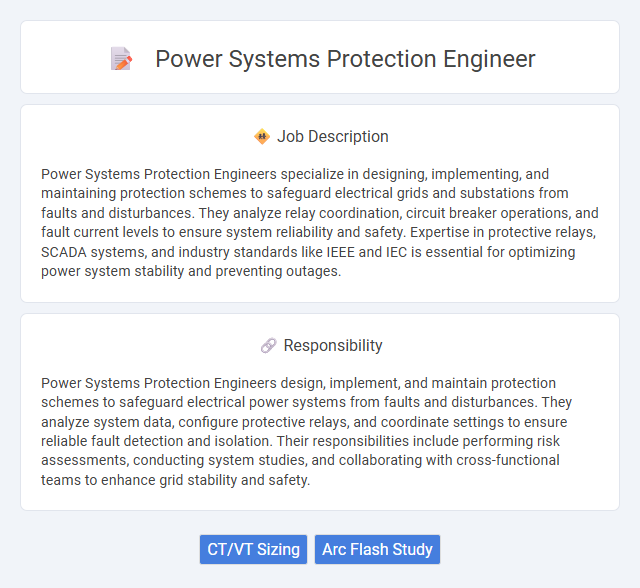
Power Systems Protection Engineers specialize in designing, implementing, and maintaining protection schemes to safeguard electrical grids and substations from faults and disturbances. They analyze relay coordination, circuit breaker operations, and fault current levels to ensure system reliability and safety. Expertise in protective relays, SCADA systems, and industry standards like IEEE and IEC is essential for optimizing power system stability and preventing outages.
Individuals with strong analytical skills and a keen attention to detail are likely to be well-suited for a Power Systems Protection Engineer role. Those comfortable working under high pressure and with complex electrical systems may find this job aligns with their capabilities. Candidates who enjoy problem-solving and continuous learning in technical environments probably have a higher chance of success in this position.
Qualification
A Power Systems Protection Engineer typically requires a Bachelor's degree in Electrical Engineering or a related field, with specialized knowledge in power system protection and control. Professional certifications such as Chartered Engineer (CEng) or certifications from the Institute of Electrical and Electronics Engineers (IEEE) enhance credibility and expertise. Proficiency in protection relay settings, fault analysis, and power system simulation software like ETAP or PSCAD is essential for successful job performance.
Responsibility
Power Systems Protection Engineers design, implement, and maintain protection schemes to safeguard electrical power systems from faults and disturbances. They analyze system data, configure protective relays, and coordinate settings to ensure reliable fault detection and isolation. Their responsibilities include performing risk assessments, conducting system studies, and collaborating with cross-functional teams to enhance grid stability and safety.
Benefit
Power Systems Protection Engineers likely benefit from highly specialized expertise that enhances grid reliability and safety, reducing risks of outages and equipment damage. Their role may offer substantial job stability due to the critical demand for secure power distribution in evolving energy markets. Career growth opportunities could be prominent, driven by ongoing advancements in smart grid technologies and renewable energy integration.
Challenge
Power Systems Protection Engineer roles likely involve complex problem-solving challenges associated with safeguarding electrical grids against faults and failures. Managing the integration of advanced protection technologies could require high precision and adaptability to evolving industry standards. The job may frequently demand rapid decision-making to ensure system reliability and minimize downtime risk.
Career Advancement
Power Systems Protection Engineers play a critical role in designing and maintaining electrical safety protocols across utilities and industrial setups, enhancing grid reliability and preventing equipment failure. Career advancement opportunities include progression to senior engineering roles, project management positions, or specialization in digital protection technologies and smart grid integration. Gaining certifications such as Professional Engineer (PE) or specific vendor credentials, alongside experience with protection relays and IEC 61850 standards, significantly boosts promotion prospects in this field.
Key Terms
CT/VT Sizing
Power Systems Protection Engineers specialize in CT/VT sizing to ensure precise current and voltage measurement for reliable relay operation and system fault detection. Proper selection of current transformers (CTs) and voltage transformers (VTs) involves calculating burden, accuracy class, and saturation levels to maintain system stability and avoid maloperation. Expertise in CT/VT ratio determination directly impacts the effectiveness of protective relays in preventing power outages and equipment damage.
Arc Flash Study
Power Systems Protection Engineers specialize in conducting Arc Flash Studies to analyze electrical systems and evaluate potential flash hazards. They utilize software tools like ETAP or SKM PowerTools to model electrical networks, calculate incident energy levels, and recommend appropriate personal protective equipment (PPE) and safe working distances. Their expertise ensures compliance with IEEE 1584 standards and NFPA 70E guidelines, enhancing workplace electrical safety and minimizing arc flash risks.
 kuljobs.com
kuljobs.com